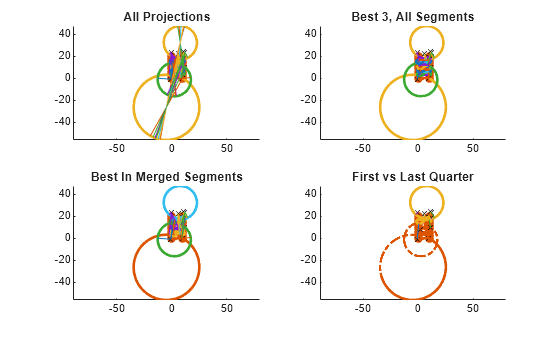closestProjections
Encuentre proyecciones ortogonales entre el vector tangente de ruta y el punto de consulta
Desde R2022a
Sintaxis
Descripción
[ intenta proyectar cada punto xy de la matriz points sobre cada segmento clotoide contenido en la ruta de referencia, arclengths,distances] = closestProjections(refPath,points)refPath, de modo que el vector de proyección sea ortogonal al ángulo tangente de la ruta. Devuelve la proyección ortogonal más cercana entre la curva y el punto de consulta en cada segmento como un par de dos arreglos de celdas, arclengths y distances, que contienen las longitudes de arco y las distancias respectivamente.
[___, devuelve opcionalmente los puntos proyectados, projPoints] = closestProjections(refPath,points)projPoints como un arreglo de celdas que contiene datos de ruta evaluados en el elemento de longitud de arco correspondiente.
Ejemplos
Argumentos de entrada
Argumentos de salida
Capacidades ampliadas
Historial de versiones
Introducido en R2022a
